Homeschool moms, especially new-to-homeschooling moms, can easily fall prey to some nasty myths. These myths, as with any myths, are simply not true. Read, learn, and be encouraged.
1) School requires 7 hours of carefully-planned-to-the-minute instruction. If your child doesn’t respond well to 7 hours in a chair at a desk, the answer isn’t how to fix him or how to fill 7 hours. The solution comes from realizing that schools spend up to 75% of each day in non-instructional activities: waiting for silence, waiting for eye contact, waiting for the slower students to catch up, counting who’s there, counting who’ll be eating lunch, counting noses again after moving from here to there, standing in line after line after line—you get the idea. Seventy-five percent! Three-quarters of their day! My kids could go off-topic eleventy-dozen times and still get all their work done in less time than they would have spent at school.
2) School requires homework beyond the lesson. Some new homeschool parents wonder how much homework should be assigned after their students complete each subject’s daily lesson. My answer is none. Schools assign homework because there isn’t enough time left in their busy day to actually complete a lesson. We did lesson work as part of each subject’s “class time,” so there was no need for further work after the class was done. (Bonus: Homeschool kids get to do the practice work immediately after learning the lesson, rather than struggling hours later to remember what to do and how to do it.) Reading was our only exception, and that was because I never held reading class once my kids were reading independently—I just let them go off and read on their own time. We called it pleasure reading, instead of considering it as another academic subject.
3) It doesn’t really count as homeschooling if:
- We didn’t learn it during school hours. (Sometimes the best lessons happen on the weekends or in the evening or while you’re away from home.)
- We didn’t learn it from “approved” curriculum. (Sometimes the best lessons happen out-of-the-box and away-from-the-books.)
- We didn’t plan to learn it. (Sometimes the best lessons happen spontaneously.)
- None of our friends are also studying it. (Sometimes the best lessons fit your personal, immediate needs, and not the needs of anyone else.)
4) All children progress according to an age-based “scope and sequence.” Pfft! Children don’t all begin crawling at the same age (some prefer scooting, and others just stand up and take off), children don’t all begin talking at the same age (or with the same vocabulary), children don’t all learn to use the potty at the same age, and children don’t all learn reading, geography, and trigonometry at the same age. Age actually has very little to do with learning ability. And while we’re on the topic, when was the last time you saw a scope-and-sequence for learning very important skills of when and how to rotate tires or change motor oil, cooking an entire meal and getting every dish done at the same time, sharpening a lawn mower blade, changing a newborn’s diaper with one hand while holding onto a toddler-Houdini with the other, or being able to tell the difference between chicken pox and a skin rash caused by an allergic reaction to medicine? Sometimes education comes on a “need to know” basis—when you need to know it, you’ll learn it. Life is its own scope and sequence, and the scope and the sequence are different for each person.
5) There’s a better teacher out there somewhere. Maybe you’ve been waiting for the ideal teacher to come along to take your kids under her wing and set afire their love of learning—the right teacher. You feel a little like the old knight in Indiana Jones and the Last Crusade, who guarded the Messiah’s chalice for 900 years, waiting for a new knight to come and relieve him of his post. However, that ideal teacher, the “new guardian” of your children’s education just might end up being you. We were fervently praying for our daughter, Jen, to get the right public school classroom and the right teacher for her 5th grade year, when God showed us Door #3: Homeschooling. He disregarded both of the options in her public school and guided us down an entirely different path to the school and the classroom and the teacher He had chosen for her needs: Mom. Our son, Nathan, needed a teacher for 1st grade with a personality that would accept and appreciate his boundless sense of humor, since his Kindergarten teacher had kept him on the Time-Out Chair for nearly the entire school year. Again, Door #3 led to Mom being selected as the ideal teacher for him. The ideal teacher you’re waiting for, the ideal teacher your kids need is in all likelihood staring back at you from the bathroom mirror.
6) Comparing ourselves to other families will show us how we’re doing. Comparing my family to other homeschooling families was not really a good thing to do. Comparing how my kids were doing in their schoolwork to how other kids were doing, again not a good thing. Comparing how my kids were doing now to how they had previously been doing was great! We could definitely see their individual progress from week to week and month to month (sometimes faster, sometimes slower, but they continually moved beyond where they had been before). When I came across a blog where another mom had posted her 12-year-old’s super-aggressive list of books that he’d read during 7th grade, I wanted to poke my eyes out with salad tongs. His unbelievably extensive list (for that one year!) could have passed as the cumulative life-time achievements of a tenured college literature professor. I decided to stop reading that blog. It was a wise choice. Instead, I paid more attention to how my child learned to read words, rather than guess at them, and reading those words led her to read a whole book, which she enjoyed enough to want to read another, which was two more than she’d ever read before.
7) I need “Me” time. When my kids were smaller and needed more attention, I used to feel like I never had any “me” time. But I wasn’t the #1 focus at that time—and I assured myself that “my time” would come later. As my children grew, I taught them skills and responsibilities, which gave me helpers to lessen my long list of to-do’s each day and gave me just enough “me time” to let me think an entire thought by myself and thereby make life bearable. As my children’s abilities increased each year, their ability to help out increased, too, and my free time grew accordingly. The bigger shock came when they had both gone off to college and left me with no more helpers!
8) “I blew it, I made a mess of things, and I can’t undo it.” If you’ve made a big mistake (like pushing your student to the point of tears over conjugating verbs), apologize. Hug each other and promise to help each other figure out the best way to learn this stuff. Your child will respect you more for your role-modeling of humility. Ask your kids for their input on different ways to learn certain subjects—they will have great suggestions for activities to try, and their ideas will help tailor activities to their specific learning style needs. When my kids weren’t sure of how to proceed, I made little reminder signs to decorate our classroom: “One free hug with every hint!” “If you’re stuck, ask Mom. If you’re confused, ask Mom. If you’re not sure, ask Mom.” (Can you tell my students had lost all their self-confidence in public school?) Holding a child on my lap and offering encouraging cuddles was extremely beneficial to both of us. Even during those occasions when you just don’t know what to do next, sharing the love through hugs and prayers will draw you and your students closer together—and that’s the biggest reason why you chose to homeschool in the first place.
9) The teacher must always be right. Wrong. We are fallible humans, and we make mistakes. Textbooks and answer keys occasionally include mistakes, too. I found several mistakes in textbooks and answer keys during our homeschooling career. Sometimes they were typos, and sometimes they were just errors, but regardless of why, the books were wrong. Parents and kids alike will learn from homeschooling, and we learn more from our mistakes than we do when everything goes smoothly and perfectly. When you mess up, admit it; apologize, ask for forgiveness, make amends, and then move on. Be a shining example of how an adult should handle personal goof-ups with grace and humility—they certainly won’t see that in many other areas of life.
10) “I can’t homeschool—I don’t know everything!” That’s the point. Homeschooling parents don’t have to know it all, but they can teach their children anyway and can learn right along with the kiddies. When my kids asked me a tough question and I didn’t know the answer, their eyes lit up when I said in all honesty, “I don’t know… but I’ll bet we can find the answer together.” Kids appreciate honesty, especially from adults, and an honest admission of “I don’t know” is a refreshing change for them from the know-it-all attitude they usually get from the adult world. My kids delighted in playing “Let’s Stump Mom,” and their desire to learn increased with every round, won or lost. No one knows everything, but everyone can learn more. Let learning become a regular habit for parents as well as for children. It’s another facet of that role-modeling thing!

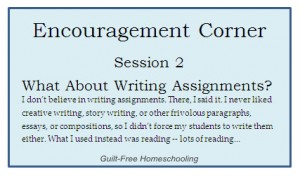
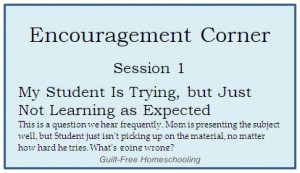
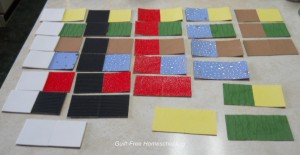
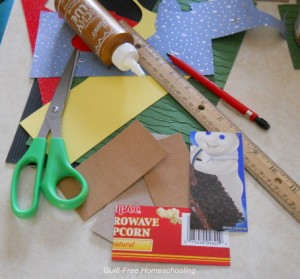
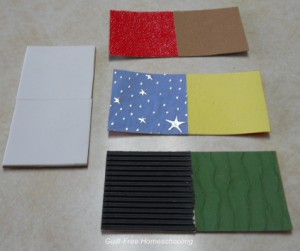
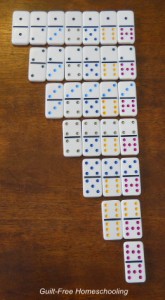


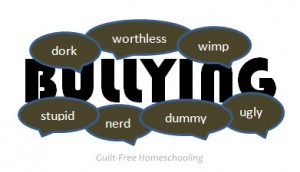


 Guilt-Free Homeschooling is the creation of Carolyn Morrison and her daughter, Jennifer Leonhard. After serious disappointments with public school, Carolyn spent the next 11 years homeschooling her two children, from elementary to high school graduation and college admission. Refusing to force new homeschooling families to re-invent the wheel, Carolyn and Jennifer now share their encouragement, support, tips, and tricks, filling their blog with "all the answers we were looking for as a new-to-homeschooling family" and making this website a valuable resource for parents, not just a daily journal. Guilt-Free Homeschooling -- Equipping Parents for Homeschooling Success!
Guilt-Free Homeschooling is the creation of Carolyn Morrison and her daughter, Jennifer Leonhard. After serious disappointments with public school, Carolyn spent the next 11 years homeschooling her two children, from elementary to high school graduation and college admission. Refusing to force new homeschooling families to re-invent the wheel, Carolyn and Jennifer now share their encouragement, support, tips, and tricks, filling their blog with "all the answers we were looking for as a new-to-homeschooling family" and making this website a valuable resource for parents, not just a daily journal. Guilt-Free Homeschooling -- Equipping Parents for Homeschooling Success!

Recent Comments